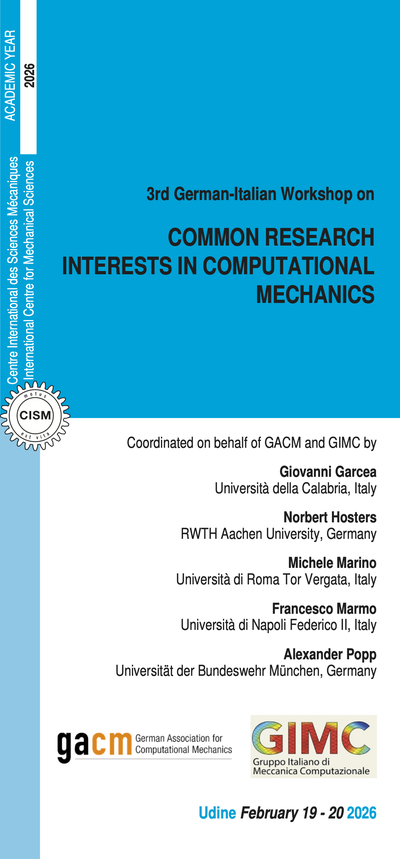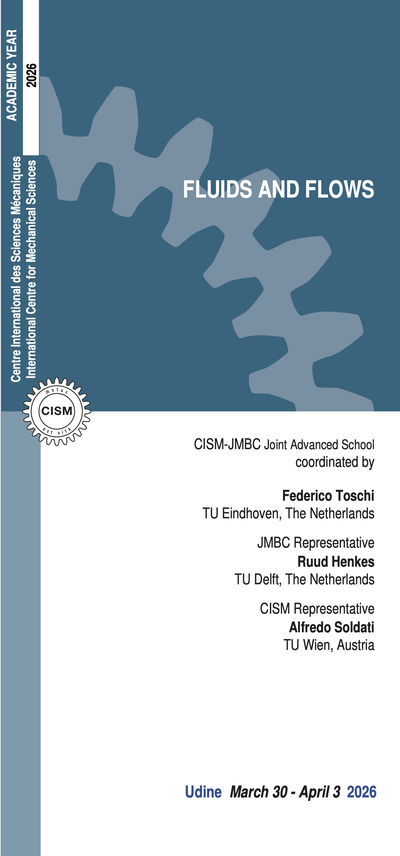Aita D, Barsotti R, Bennati S (2019): Looking at the collapse modes of circular and pointed masonry arches through the lens of Durand-Claye’s stability area method. Archive of Applied Mechanics https://doi.org/10.1007/s00419-019-01526-z.
Angelillo M, Fortunato A, Gesualdo A, Iannuzzo A, Zuccaro G (2018): Rigid block models for masonry structures. Int. J. Masonry Research and Innovation 3(4), 349-368.
Bagi, K (2014): When Heyman’s Safe Theorem for Rigid Block Systems Fails: Non-Heymanian Collapse Modes of Masonry Structures. Int. J. Solids and Structures 51, 2696-2705.
Block Ph, Ochsendorf J (2007): Thrust network analysis: A new methodology for three-dimensional equilibrium. J. International Association for Shell and Spatial Structures 48(3), 155, 167-173.
DeJong MJ (2012): Amplification of rocking due to horizontal ground motion. Earthquake Spectra 28(4), 1405-1421.
DeJong MJ, Dimitrakopoulos EG (2014): Dynamically equivalent rocking structures. Earthquake Engineering and Structural Dynamics 43(10), 1543-1564.
Foce F, Aita D (2003): The masonry arch between 'limit' and 'elastic' analysis. A critical re-examination of Durand-Claye's method, in Proceedings of the first international congress on construction history (Madrid, 20-24 Jan 2003), Vol. II, 895-908. ISBN 84-9728-072-5.
Lemos JV (2007): Discrete element modeling of masonry structures. Int. J. Architectural Heritage 1, 190-213.
Sarhosis V, Bagi K, Lemos JV, Milani G (2016): Computational Modeling of Masonry Structures Using the Discrete Element Method. ISBN 9781522502319, IGI Global, Hershey, USA. Chapters 2.-6.
Wolfe, WS (1921): Graphical analysis. A textbook on graphic statics, 1st edition, McGraw-Hill Book Company, New York. Chapter I.: General Methods.
6 lectures on: Classical graphical statics. Fundamentals are recalled and introduction is given to those techiques (Méry, Eddy-Lévy, Wolfe) that inspired modern computerized versions in masonry mechanics. Particular emphasis is on the Durand-Claye method and its generalization to domes. Applications to masonry mechanics issues and on historic structures are shown.
6 lectures on: The basic ingredients of a method based on unilateral equilibrium and rigid block kinematics, which may allow the implementation of Heyman’s model for masonry on a computer, are introduced. The method is based on energy minimization and allows for the evaluation of the combined effect of loads and settlements on real masonry structures treated as assemblies of rigid blocks.
4 lectures on: After an introductory overview of the different discrete computational approaches, the definition and main types of DEM are introduced. Theoretical fundaments of those techniques most often applied in the engineering practice and masonry research (3DEC, DDA, Non-Smooth Contact Dynamics, Munjiza's FEMDEM) are presented with special emphasis on their limitations.
5 lectures on: Thrust Network Analysis is a 3d method for obtaining lower-bound solutions by finding equilibrium force networks within the masonry vault's geometry. It is a powerful tool for visualizing and understanding the equilibrium of compression-only structures and for finding their collapse mechanisms. Wide variety of attractive architectural applications exist that are also presented.
7 lectures on: Elements of dynamics of rigid block systems are presented, with scale effects, collapse mechanisms, and particulars – like damping, an important aspect of masonry behaviour – related to earthquake engineering. These are introduced in contrast to the dynamic behavior of typical elastic and inelastic structures. Finally, aspects of DEM modelling of dynamic collapse are discussed.
5 lectures on: The most widespread DEM software in practical analysis of the mechanics of masonry structures is 3DEC. Features of the method like contact recognition and representation, damping possibilities, numerical stability issues and the application of structural elements like cable or beam reinforcements are to be introduced. Case studies and application advice will finally be given.
The registration fee is 600.00 Euro + VAT*, where applicable (bank charges are not included). The registration fee includes a complimentary bag, four fixed menu buffet lunches (on Friday upon request), hot beverages, downloadable lecture notes and wi-fi internet access.
Applicants must apply at least one month before the beginning of the course. Application forms should be sent on-line through the following web site: http://www.cism.it. A message of confirmation will be sent to accepted participants. Applicants requiring assistance with the registration should contact the secretariat at the following email address cism@cism.it.
Applicants may cancel their course registration and receive a full refund by notifying CISM Secretariat in writing (by email to cism@cism.it) no later than two weeks prior to the start of the course.
Cancellation requests received during the two weeks prior to the start of the course will be charged a 50.00 Euro handling fee. Incorrect payments are also subject to a 50.00 Euro handling fee.
A limited number of participants from universities and research centres who are not supported by their own institutions can be offered lodging and/or board, if available, in a reasonably priced hotel or student guest house.
Requests should be sent to CISM Secretariat by May 27, 2020 along with the applicant's curriculum and a letter of recommendation by the head of the department or a supervisor confirming that the institute cannot provide funding. Preference will be given to applicants from countries that sponsor CISM.
Information about travel and accommodation is available on the web site www.cism.it, or can be mailed upon request.
* Italian VAT is 22%.





